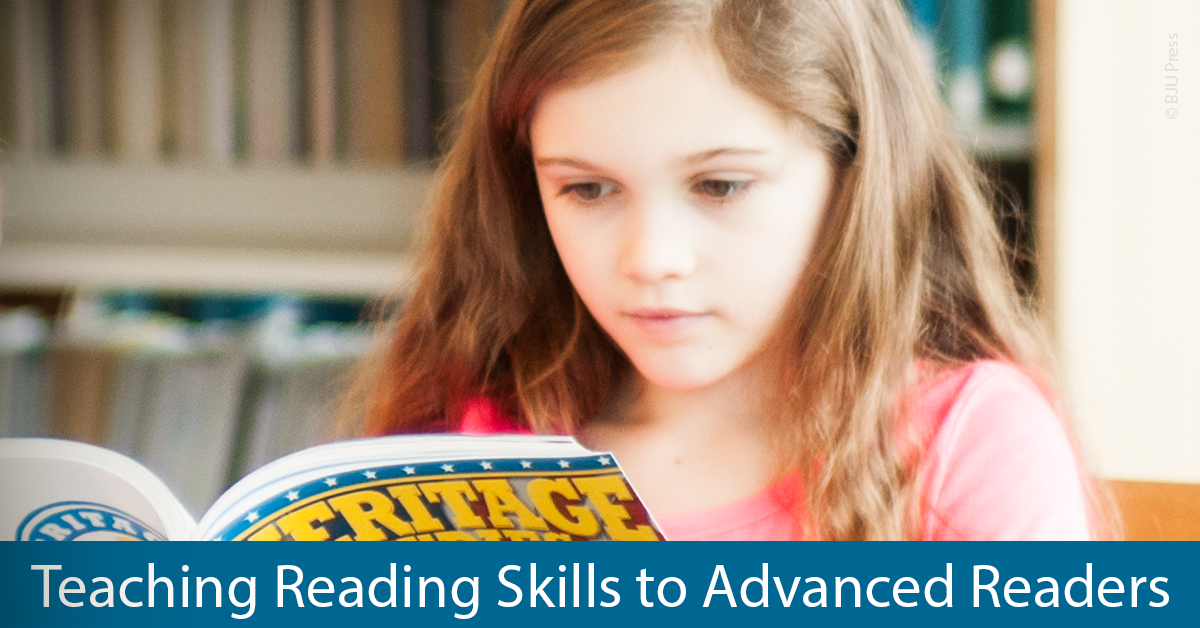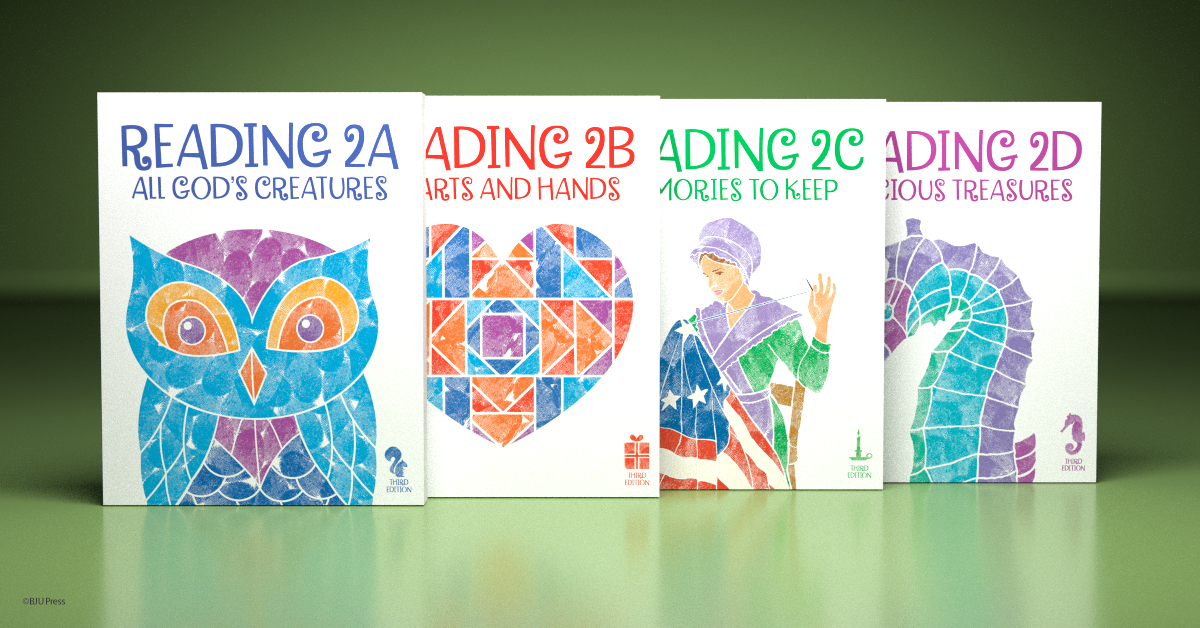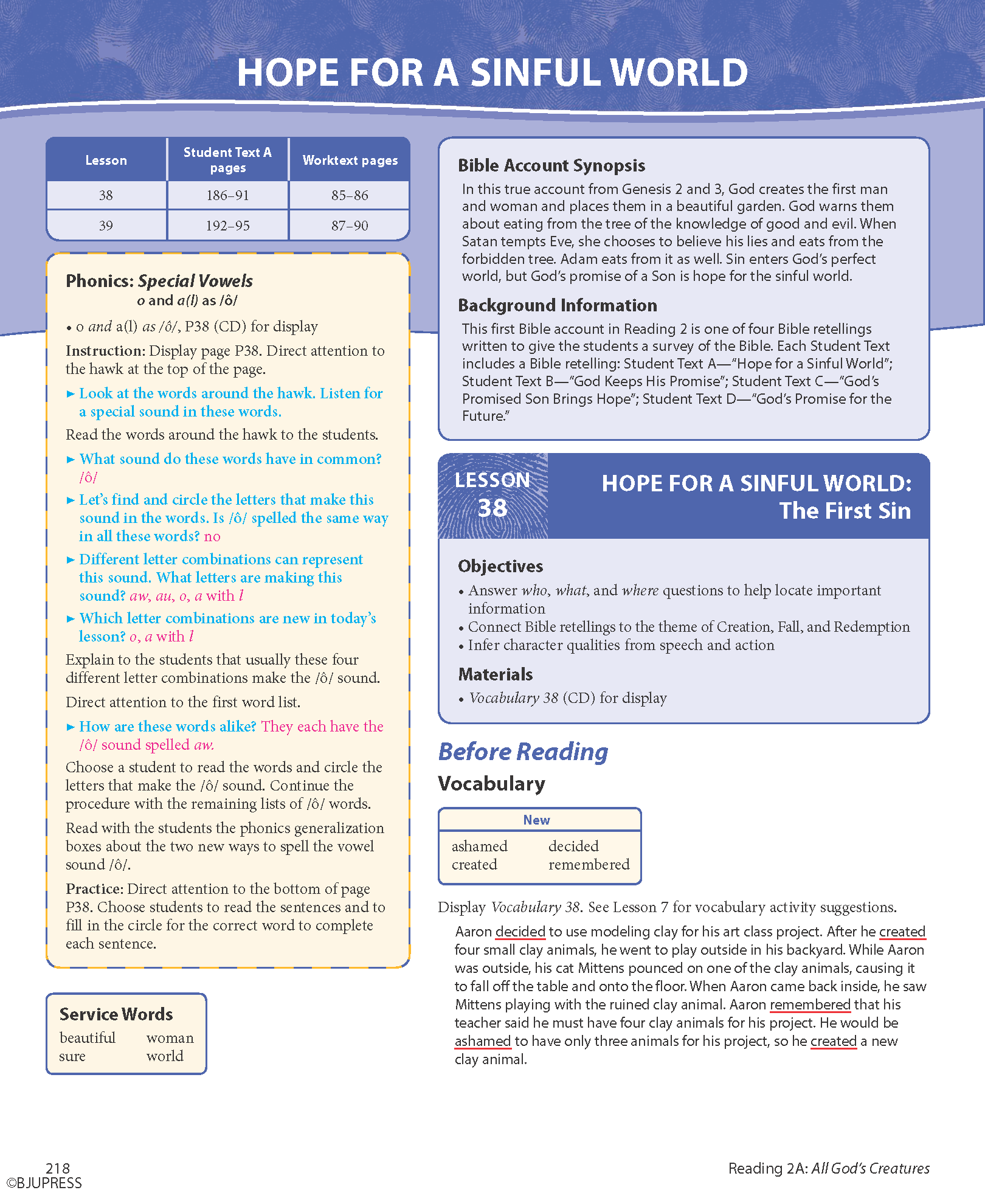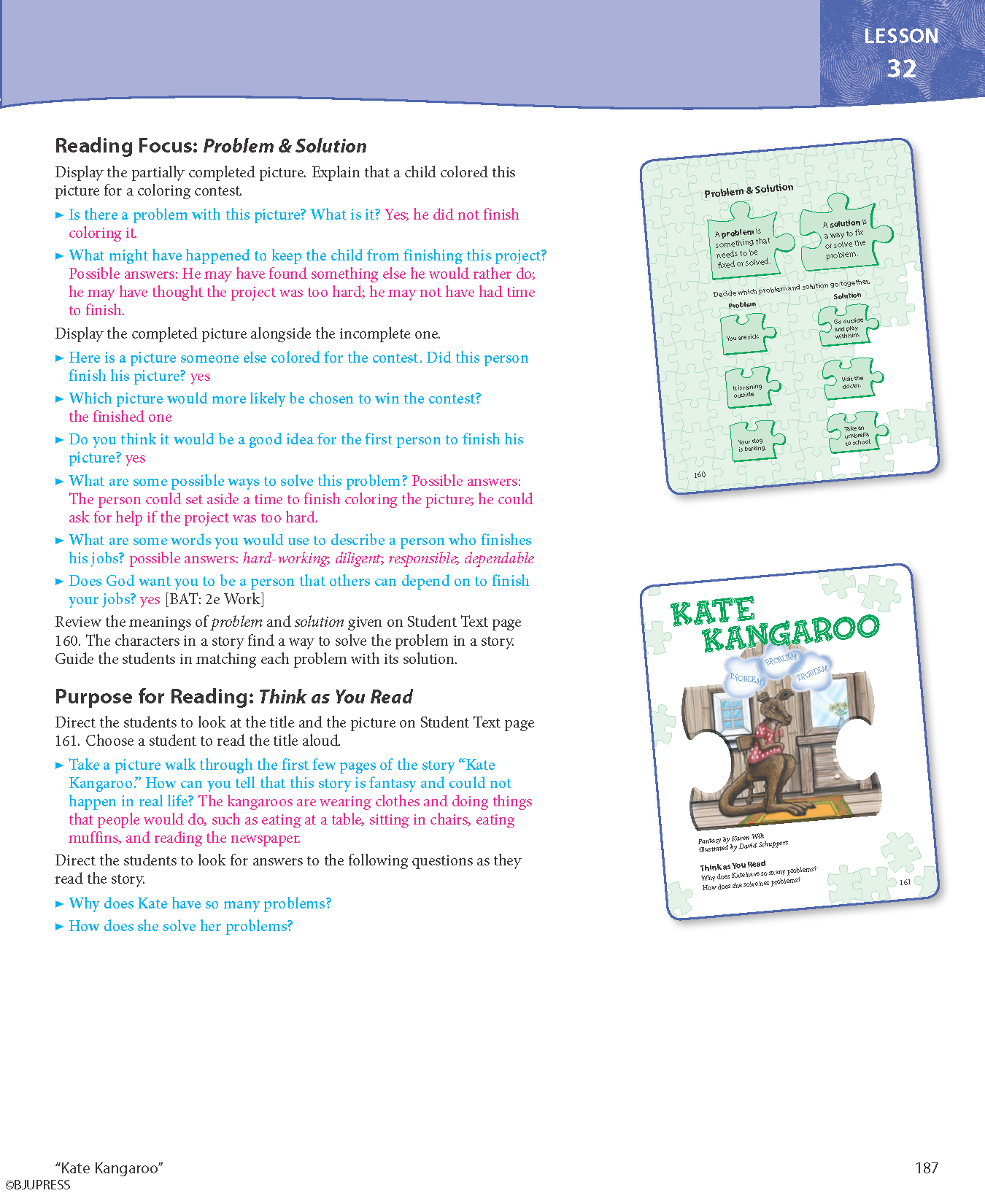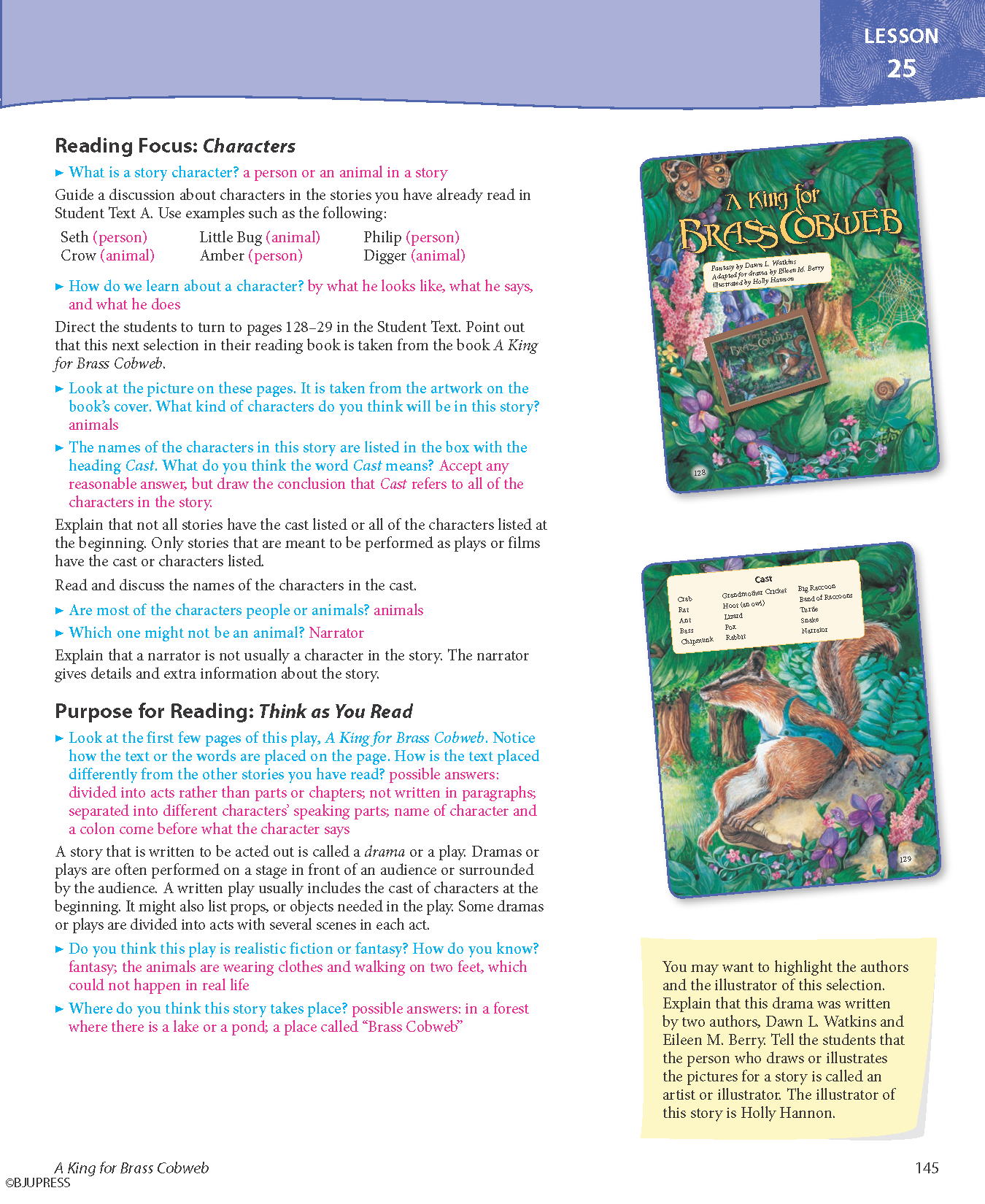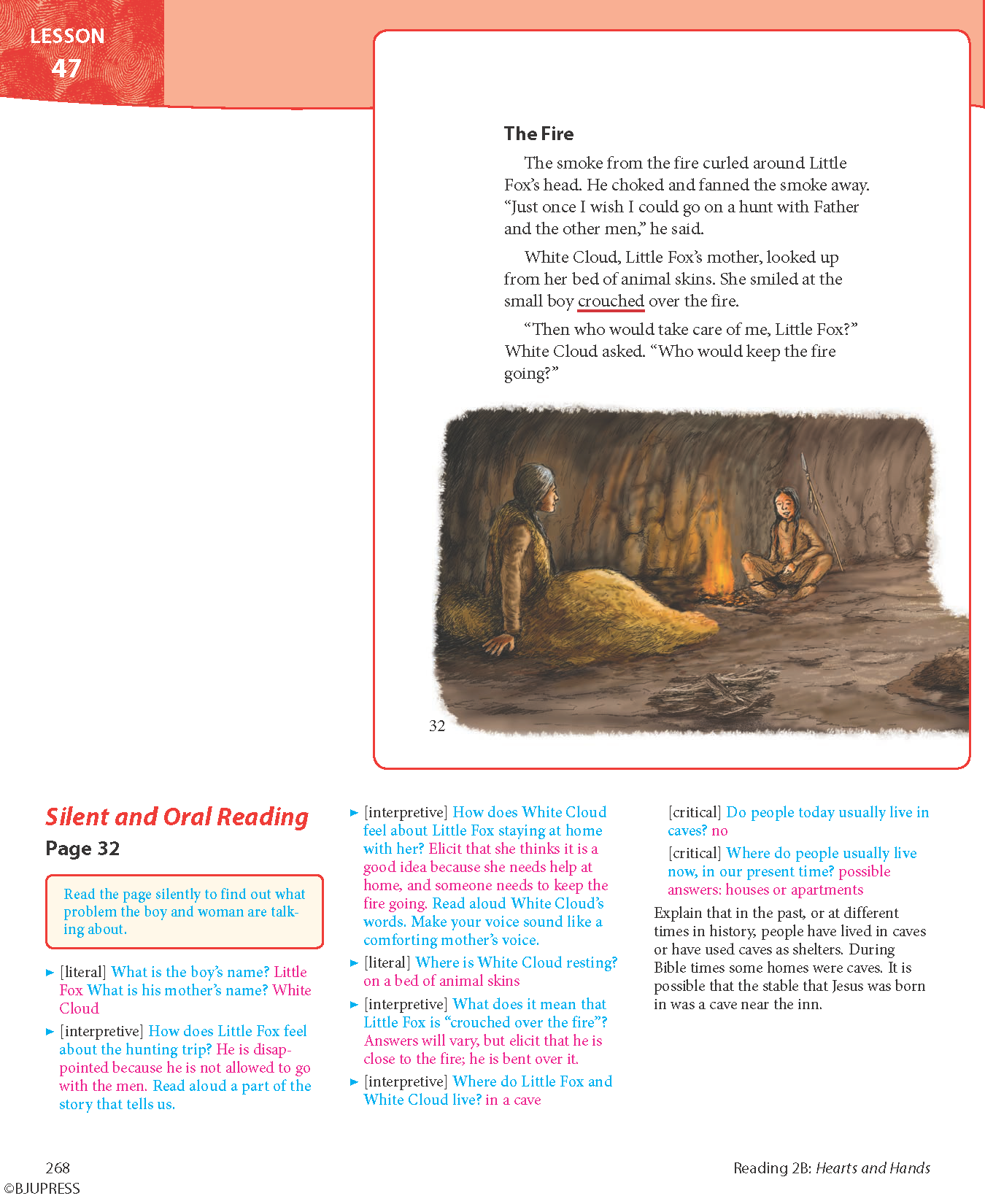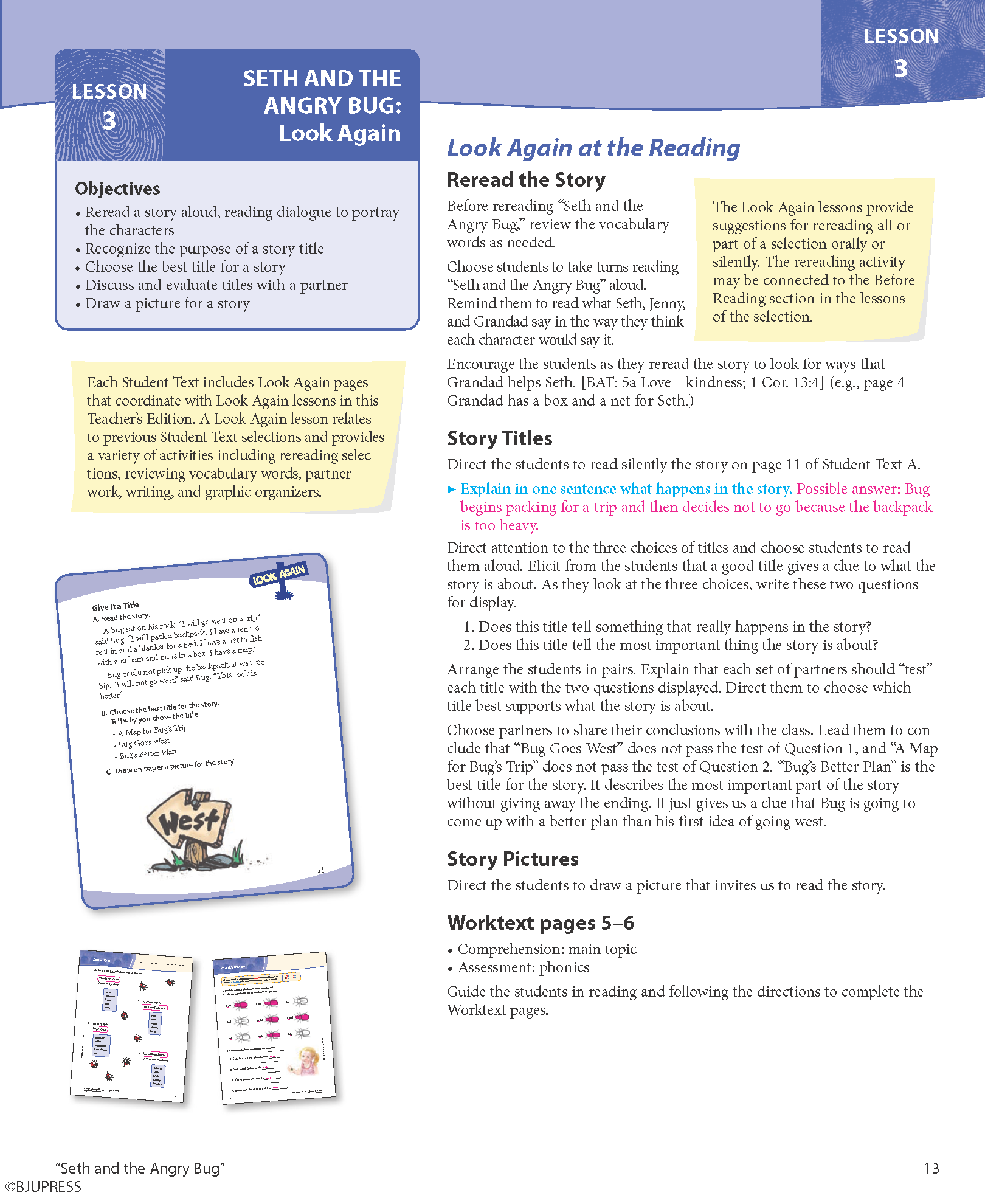
I often tell other homeschoolers that reading is my favorite subject to teach. I love the deep, enjoyable conversations that my daughter and I can have over a fairly short and simple reading selection. I love the fact that she’s not just learning phonics and vocabulary but also how to think critically about the things she reads. That’s a skill that will enable her to be a lifelong reader and a lifelong learner.
So how does our reading curriculum foster these conversations? Through a four-level questioning approach.
On the first day of every school year, my daughter and I get out the brand-new reading books from BJU Press, look at the tables of contents, and excitedly preview the selections we’re going to read over the next few months.
But last year, both us had to stifle a bit of disappointment when we saw that Reading 2 included the full text of the classic children’s book The Puppy Who Wanted a Boy, which tells the story of Petey the puppy and his search for a boy to love. Our disappointment wasn’t because the book wasn’t good—it’s a wonderful book, one that we have enjoyed. But we had already read it many, many times—so many times, in fact, that both of us had part of the text memorized. I wondered how I, as the teacher, would be able to hold my daughter’s interest through the several lessons that the Lesson Plan Overview allotted for that particular selection. Wasn’t she going to get bored reading something so familiar?
I shouldn’t have worried. My daughter and I both ended up enjoying this selection. She enjoyed reading it, and I enjoyed teaching it. The multilevel questioning approach in the BJU Press Reading curriculum ensures that my daughter and I can have interesting, meaningful discussions about The Puppy Who Wanted a Boy or any other of the selections because it guides us in looking at the text from several different angles.
Angle 1: Literal
When you look at the discussion questions in your Reading Teacher’s Edition, you may notice that some of them are labeled as literal. These questions are designed to assess the most basic level of comprehension—the answers are easily found in the text itself. For example, one of the first questions in The Puppy Who Wanted a Boy is “What is Petey?”
Even though it’s sometimes tempting to skip over these “duh” questions, we as homeschoolers need to ask them because we need to make sure that our children are reading carefully and are understanding what they read. However, if we ask only literal questions, our children are going to get bored really fast.
Angle 2: Interpretative
The selections in our reading book get a whole lot more interesting with the use of interpretive questions. With these, our children have to use the text to draw conclusions. For example, in The Puppy Who Wanted a Boy, I might ask why Petey’s mother is worried after she returns without a boy for Petey. The text doesn’t spell it out; my daughter has to infer the reason from the conversation Petey and his mother have.
Angle 3: Critical
Thinking questions take our discussions to an even deeper level. When I ask critical questions such as “Why do you think the boy Petey found is outside by himself?” or “Why do you think the lady allows Petey to come inside?” my daughter has to think beyond what’s stated in the story to make evaluations, predictions, and applications. Often, these types of questions lead to biblical-worldview building opportunities as we apply the Bible to what we’re reading.
Angle 4: Appreciative
Appreciative questions are useful for helping to draw my daughter into the selection. While we were reading The Puppy Who Wanted a Boy, I asked her about a time when she really wanted a particular gift for Christmas or a birthday. When I did so, she suddenly sympathized much more with our puppy-protagonist and his disappointing search for a boy.
If you’re interested, take a look at the reading curriculum I’m using this year. You can also check out some of my other posts about the BJU Press reading curriculum:
- The Importance of Developing Comprehension Skills in Elementary Reading
- Does My Advanced Reader Need a Reading Curriculum?
- Learning About the Big Story in Reading

